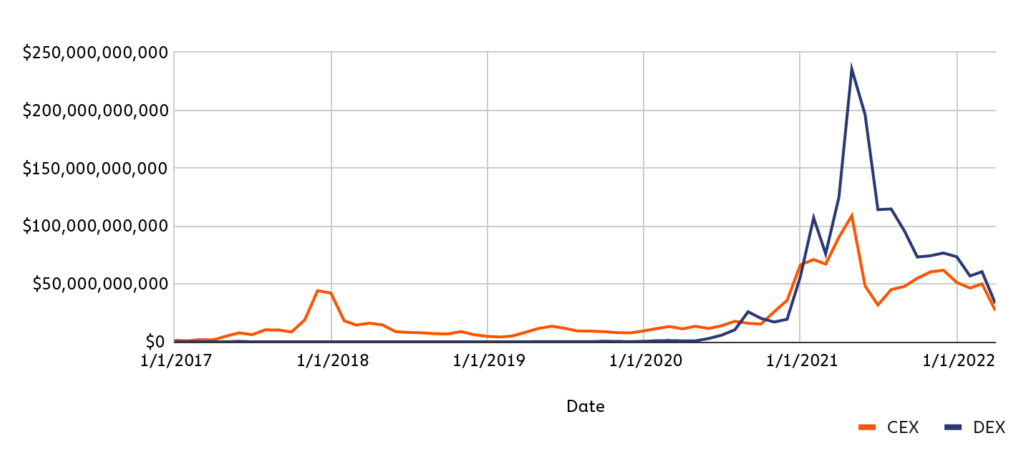Decentralized exchanges (DEX) are becoming the go-to method for cryptocurrency investors to trade with on-chain volume consistently outstripping volume on centralized exchanges (CEX).
From April 2021 to April 2022, DEXs saw on-chain transaction volume amounting to $224 billion and CEXs a volume of $175 billion. DEXs first beat CEXs on this volume 15 months ago and is a sign that they are now becoming the most popular way of transacting.
SponsoredThe Chainalysis report covers various aspects of the decentralized market and is due for release later this month. The data platform says that “DEXs now have a confident lead in on-chain transaction volume,” though the recent market crash proved that CEXs were slightly more resilient.
The leading DEXs are Uniswap, SushiSwap, Curve, dYdX, and the 0x Protocol. These platforms have dominated the market as the top platforms in what is still a nascent space.
Last June was when DEX volumes reached their highest, accounting for 80% of on-chain transaction volume. That performance has not kept up, however, as transaction volumes are now more evenly split between DEXs and CEX. The former still leads with 55% of on-chain transaction volumes.
DEX dominance dependent on several factors
The report also notes that there are few behavioral differences between the top 10,000 ETH senders in DEXs and CEXs. The most significant difference is the percentage of their ETH came from a CEX. Seven percent of DEX users’ funds came from a CEX, but 16% of CEX users’ funds came from another CEX.
Chainalysis concludes by saying that the dominance of DEXs will depend on a number of factors. Lower fees, regulatory scrutiny, and whether the mainstream attitude will favor them are the three factors it outlines.
DEXs have certainly been becoming a more prominent part of the market, especially with liquidity provision providing attractive incentives. They also provide more flexibility and tie in well with the rest of the decentralized finance (DeFi) market.
However, regulatory scrutiny is becoming a potential threat, with lawmakers aware that the platforms are far less capable of being controlled. There have been plans to tackle unhosted wallets, and this could result in some severe repercussions for the market.


